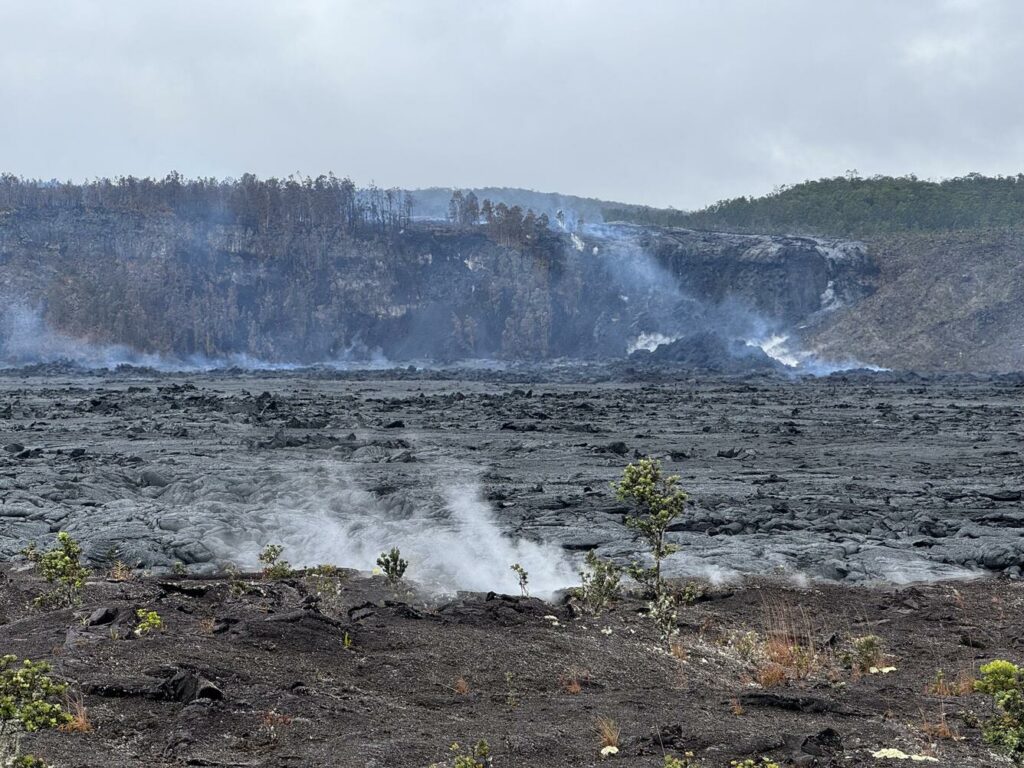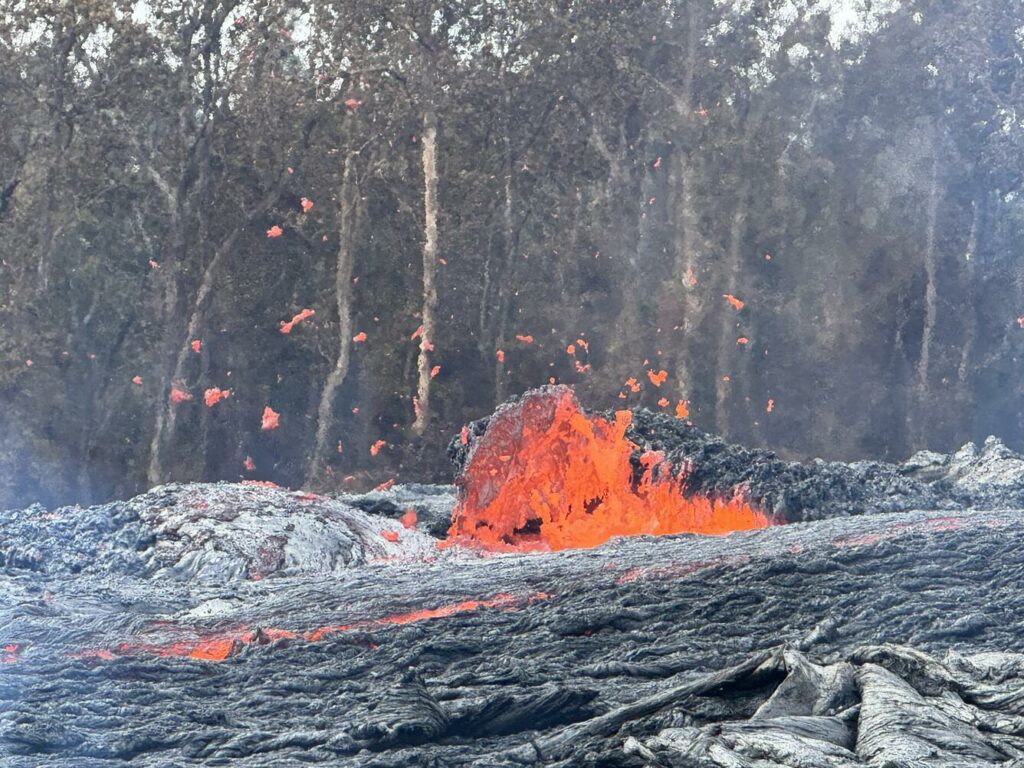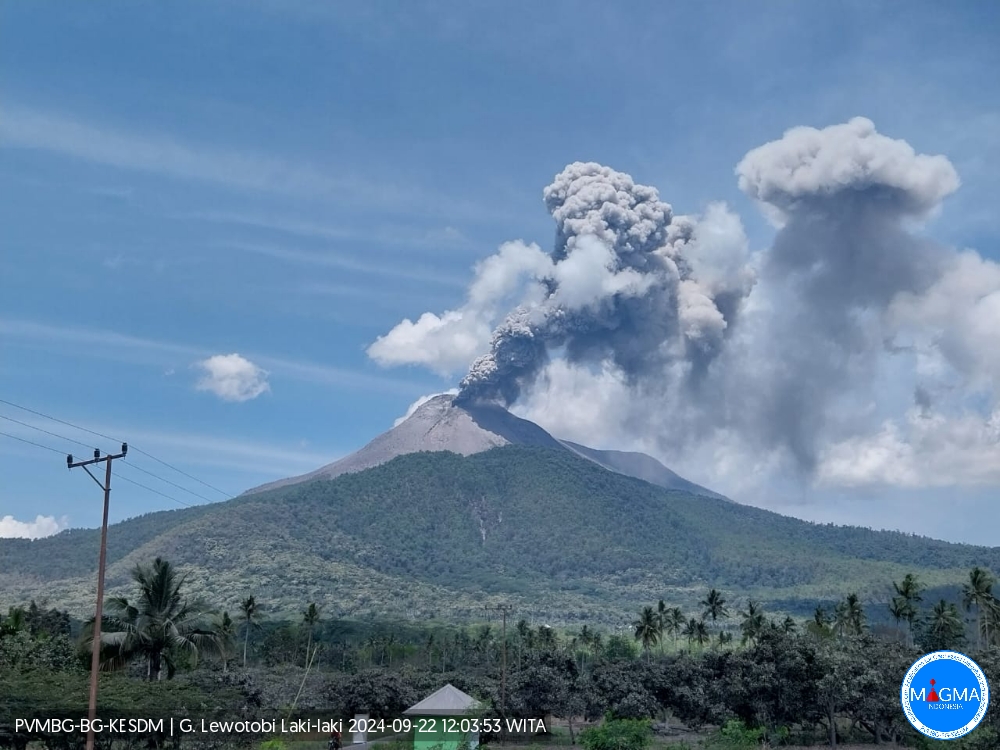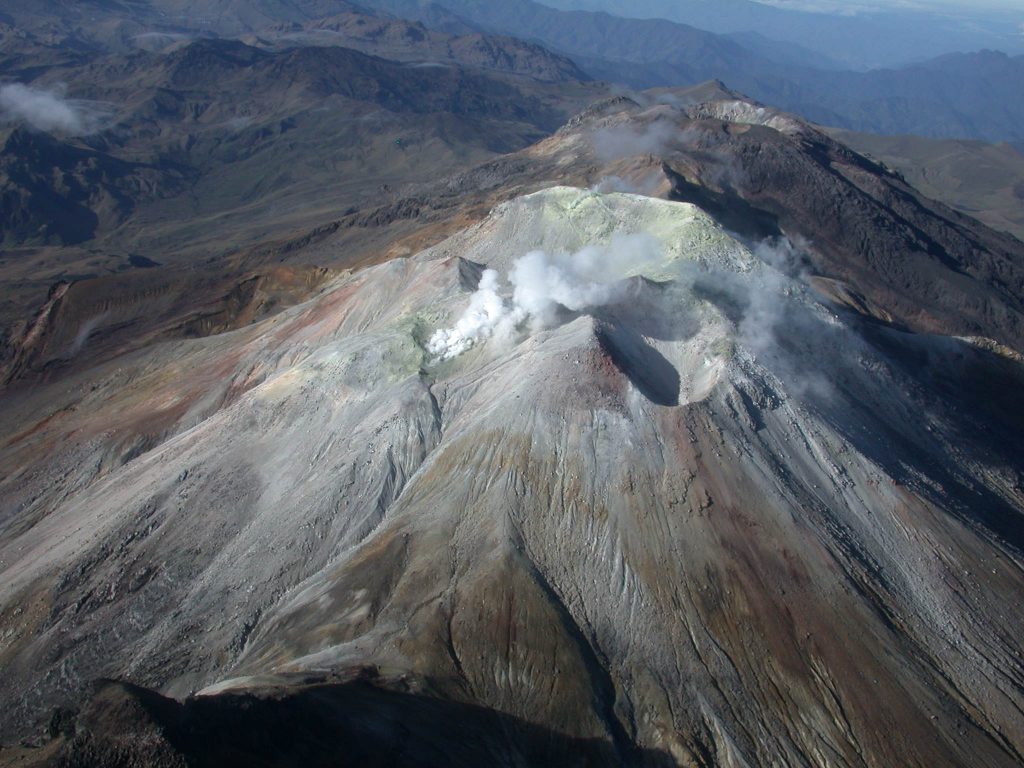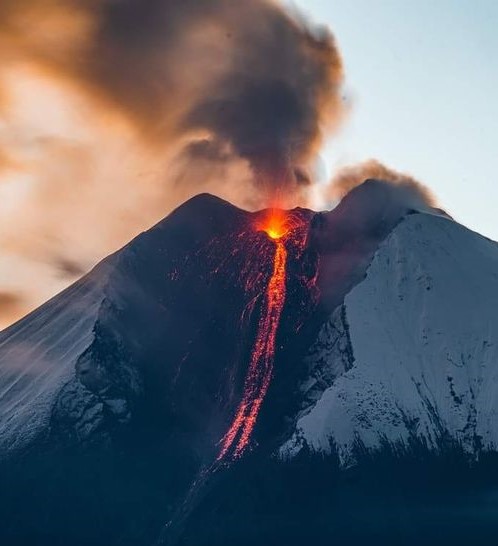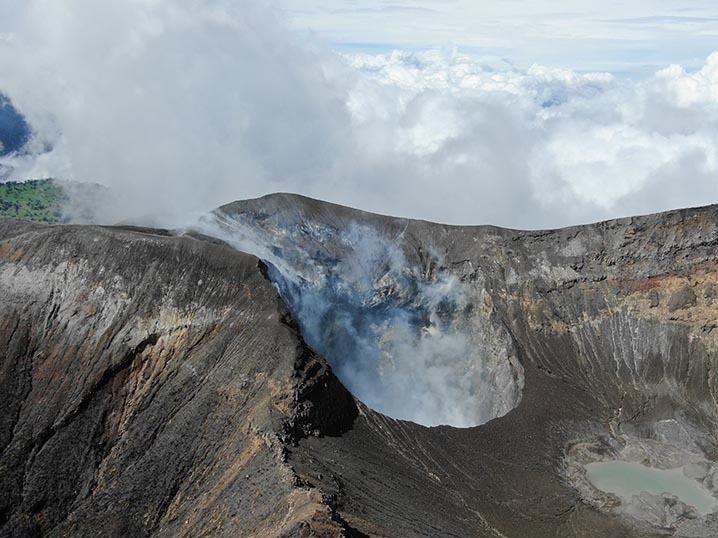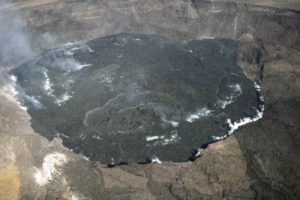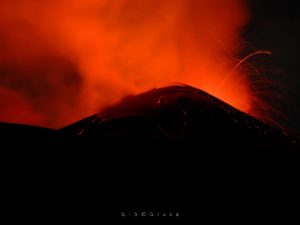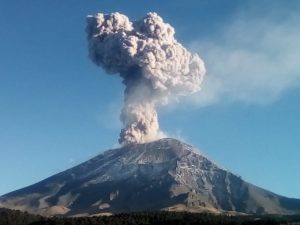September 22 , 2024.
Hawaii , Kilauea :
Saturday, September 21, 2024, 9:51 AM HST (Saturday, September 21, 2024, 19:51 UTC)
19°25’16 » N 155°17’13 » W,
Summit Elevation 4091 ft (1247 m)
Current Volcano Alert Level: WATCH
Current Aviation Color Code: ORANGE
Activity Summary:
The current eruption of Kīlauea volcano remains paused since yesterday morning (September 20). Minor glow continues at night from the vent and small spots on the flows, but diminished overnight. Degassing from the vent continues with the gas plume moving to the southwest this morning. The eruption site is within a closed and remote area of Hawaiʻi Volcanoes National Park. There is no immediate threat to life or infrastructure. Residents of nearby subdivisions may experience volcanic gas emissions related to this activity which may increase and decrease over the coming hours and days. The Volcano Alert Level/Aviation Color Code remains at WATCH/ORANGE. No changes have been detected in the lower East Rift Zone or Southwest Rift Zone.
A view across the floor of Nāpau Crater, covered with fresh lava flows. In the background of the photo, which faces northwest, lava flows that recently cascaded over the northwest wall of the crater are visible.
Summit Observations:
Nine small, shallow earthquakes were detected beneath the Kīlauea summit region over the past 24 hours. The tiltmeter at Uēkahuna remains flat or showing slight inflation. The summit tiltmeter at Sandhill continues to record deflation, but at a decreased rate compared to the onset of the eruption on September 16. This pattern suggests that only the deeper, southern summit magma body is continuing to supply magma to the middle East Rift Zone. The most recent measurement of SO2 emission rate at the summit was 60 tonnes per day on September 17, 2024.
Rift Zone Observations:
The eruption near Nāpau Crater remains paused since yesterday morning. Glow from the vent continued overnight and degassing remains fairly vigorous. The gas plume is currently moving southwest from the vent due to normal trade winds. Lava flows from this eruption have covered about 2/3 (500,000 square meters or 125 acres) of the floor of Nāpau Crater. In total, this eruption has covered more than 630,000 square meters (156 acres) of Nāpau Crater and areas to the west since Sunday night. Approximate effusion rates of roughly 5-15 cubic meters per second (6-16 cubic yards) were estimated during the most active part of the fissure eruption on September 19.
USGS Hawaiian Volcano Observatory field crews reported small fountains and lava flows erupting from one of the western fissures just before 9 a.m. HST on September 20, 2024. By 10 a.m. HST, that activity had ceased and the middle East Rift Zone eruption of Kīlauea had paused.
Shallow earthquake counts remain very low in the MERZ with about 8 in the past 24 hours. Little or no tremor is being recorded on the MERZ seismometers close to the eruption site. Tiltmeters in the MERZ continue to show no significant shallow deformation, but GPS instruments continue to show inflation at deeper levels beneath the area between Maunaulu and Nāpau Crater.
Sulfur Dioxide (SO2) emission rates measured on September 19, were 30,000 tonnes per day for during the onset of the fourth eruptive phase.
All activity is currently confined to the middle East Rift Zone between Makaopuhi Crater and Puʻuʻōʻō and there are no indications of any changes further downrift in the MERZ or in the LERZ.
Source : HVO
Photos : USGS / M. Patrick.
Indonesia , Lewotobi Laki-laki :
An eruption of Lewotobi Laki-laki occurred on Sunday, September 22, 2024 at 11:52 WITA with the height of the ash column observed at ± 900 m above the summit (± 2484 m above sea level). The ash column was observed to be gray with a thick intensity, oriented towards the West. This eruption was recorded on a seismograph with a maximum amplitude of 14.8 mm and a duration of 538 seconds.
VOLCANO OBSERVATORY NOTICE FOR AVIATION – VONA
Issued : September 22 , 2024
Volcano : Lewotobi Laki-laki (264180)
Current Aviation Colour Code : ORANGE
Previous Aviation Colour Code : orange
Source : Lewotobi Laki-laki Volcano Observatory
Notice Number : 2024LWK537
Volcano Location : S 08 deg 32 min 20 sec E 122 deg 46 min 06 sec
Area : East Nusa Tenggara, Indonesia
Summit Elevation : 5069 FT (1584 M)
Volcanic Activity Summary :
Eruption with volcanic ash cloud at 03h52 UTC (11h52 local).
Volcanic Cloud Height :
Best estimate of ash-cloud top is around 7949 FT (2484 M) above sea level or 2880 FT (900 M) above summit. May be higher than what can be observed clearly. Source of height data: ground observer.
Other Volcanic Cloud Information :
Ash cloud moving to west. Volcanic ash is observed to be gray. The intensity of volcanic ash is observed to be thick.
Remarks :
Eruption recorded on seismogram with maximum amplitude 14.8 mm and maximum duration 538 second.
Source et photo : Magma Indonésie.
Colombia , Cumbal Volcanic Complex :
San Juan de Pasto, September 17, 2024, 6:20 p.m.
From the monitoring of the activity of the Cumbal Volcanic Complex (CVC), the Colombian Geological Survey (SGC), an entity attached to the Ministry of Mines and Energy, reports that:
During the week of September 10 to 16, 2024, the activity of the Cumbal Volcanic Complex (CVC) maintained a stable behavior. Compared to the previous week, the main variations in the monitored parameters were:
● The fluctuating behavior of seismic activity, characteristic of this volcanic complex, persists, both in the type of earthquakes and in their occurrence and energy.
● A similar number of earthquakes was recorded with a slight decrease in their released energy.
● The predominance of seismicity associated with the fracturing of rock materials remained, followed by events related to fluid dynamics in the volcanic system, with low energy levels.
● Gas emissions were recorded with white columns, of low height and variable dispersion, depending on the wind regime in the area, coming from the fumarole fields of El Verde, to the northeast of the CVC and from the fumarole fields of Rastrojos and Boca Vieja, located to the southwest of the CVC.
● The other volcanic monitoring parameters showed stability.
Based on the above, the SGC recommends closely monitoring the evolution through the weekly bulletins and other information published through our official channels, as well as the instructions of the local and departmental authorities and the National Disaster Risk Management Unit (UNGRD).
Volcanic activity remains in yellow alert status: active volcano with changes in the behavior of the base level of the monitored parameters and other manifestations.
Source : SGC
Photo : SGC ( 2017)
Ecuador , Sangay :
DAILY STATE REPORT OF SANGAY VOLCANO , Saturday, September 21, 2024 .
Information Geophysical Institute – EPN.
Surface Activity Level: High , Surface Trend: Descending
Internal Activity Level: High , Internal Trend: No change
Seismicity: From September 20, 2024, 11:00 a.m. to September 21, 2024, 11:00 a.m.:
Seismicity:
Below is the count of seismic events recorded at the reference station
Explosion (EXP): 473
Rainfall / Lahars:
No rain has been recorded in the volcano area. **In the event of heavy rains, these could remobilize the accumulated materials, generating mud and debris flows that would descend the sides of the volcano and flow into adjacent rivers.
Emissions / ash column:
Due to weather conditions, it was not possible to observe gas or ash emissions using cameras; On the other hand, thanks to satellite images, two gas and ash trails with a height of 600 meters above the crater level were recorded in the West and West-Southwest directions. In turn, the VAAC agency in Washington published four reports of gas and ash emissions at heights of 600 meters above the crater level, in a West direction.
Gas:
The Mounts system detected 73 tons of sulfur dioxide (SO2), recorded at 13:15 TL on 20/09/2024.
Other monitoring parameters:
The FIRMS satellite system recorded 1 thermal anomaly, the MIROVA-VIIRS satellite system recorded 1 thermal anomaly and the MIROVA-MODIS satellite system recorded 1 weak thermal anomaly in the last 24 hours.
Observation:
Since yesterday afternoon, despite the climatic conditions of the area, thanks to the surveillance cameras, several episodes of incandescence have been observed at the crater level, accompanied by the descent of volcanic material up to approximately 1800 meters below the crater level. On the other hand, at the time of closing this report, the volcano is completely cloudy.
Alert level: yellow
Source : IGEPN
Photo : AlexBoasphoto .
Costa Rica , Turrialba :
Latitude: 10.02°N;
Longitude: 83.76°W;
Altitude: 3,325 m
Current activity level: Warning
No volcanic eruptions or earthquakes are recorded. Turrialba’s volcanic seismicity is characterized by some low-frequency, low-amplitude volcanic earthquakes of the LP and tonal coda type. Tonal coda type events have maintained a very stable dominant frequency around 6.2 Hz for months. However, since last week, a family of events, commonly called « Tornillos » type, has been observed. The dominant frequency of these events has decreased from 5.2 Hz to 2.8 Hz in the last two weeks.
In recent weeks, a slight cortical contraction was observed centered on the eastern flank of the Irazú volcano and a more pronounced contraction near the active Turrialba crater. The Multigas station detected weekly averages of 2.4 ± 0.5 ppm SO2 and CO2/SO2 and H2S/SO2 ratios of 7.2 ± 1.6 and 0.27 ± 0.04; respectively. The NOVAC station recorded a flow of 162 ± 57 t/d of SO2, similar to that of the previous week (114 ± 47 t/d). The SO2 plume in the atmosphere has not been detected by the Sentinel-5P satellite since June 4.
Source : Ovsicori
Photo : G. Avard / Ovsicori ( 2020)


